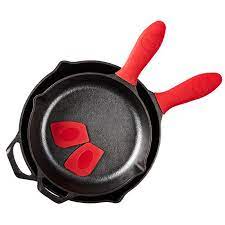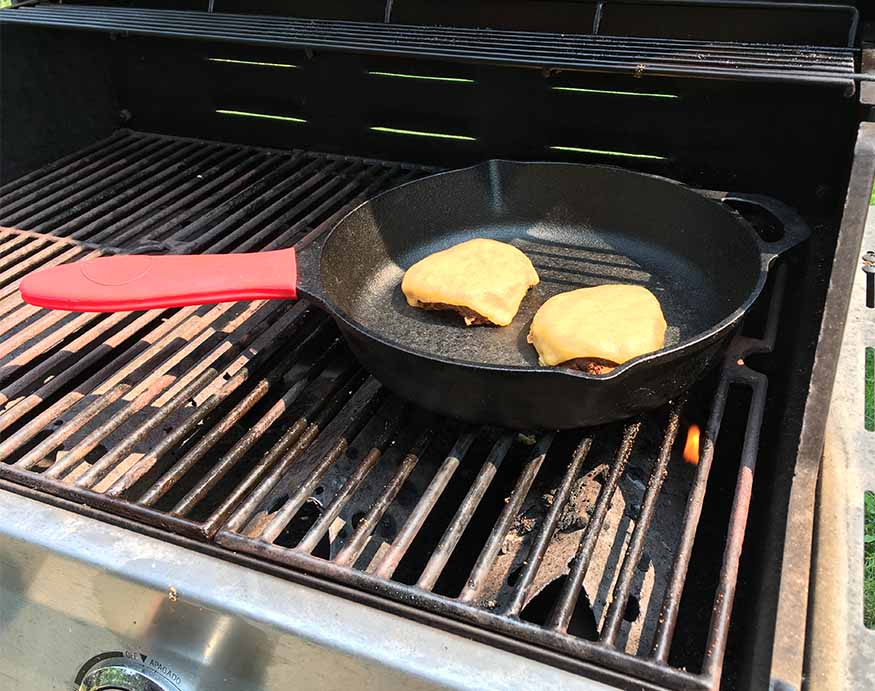Uno Casa CARING FOR YOUR CAST IRON COOKWARE

CARING FOR YOUR CAST IRON COOKWARE
So, you’re the new owner of this cast iron cookware. You must be wondering what to do next.
PREPARING
Actually, you’re good to go – all our cast iron cookware is pre-seasoned, which means it’s ready for cooking! If you wish, you can wash it with hot water and dry it off with a towel before using it. Just remember, any water residue is the enemy of cast iron products because water can cause rusting. So, because of that, make sure you dry it thoroughly on the stove after washing.
COOKING
Before cooking anything, you need to preheat your cast iron cookware. So, just take your time and heat it on a low to medium heat. After 5 to 10 minutes, carefully hover your hand over the bottom of the cast iron and feel if it’s ready to go. If your food is sticking to your cookware it means you’re putting cold food oncold cookware. One of the advantages of having cast iron cookware is that you don’t have to flip your food a lot. Let it cook, and when you see nice looking brown crust you know it’s done. If you try to lift up your steak and it sticks to the pan, it means your food is not ready. Meat will self-release when that beautiful crust is formed.
CLEANING
When cleaning your cast iron cookware, you want to hit the “sweet spot”, i.e. when it’s not too cold and not too hot. Avoid putting hot utensils into cold water as this can cause the metal to crack. The best way to clean your cast iron is to scrub off any food residue with a scrapper and wash it with hot water. Once the utensil is clean, give it another towel dry and let it completely dry off on the stove. Before storing the cookware in a dry place, don’t forget to season it. Your cast iron cookware is timeless and will only improve with use!
SEASONING
- Once your cast iron cookware is completely dry, apply a thin layer of vegetable oil all over the cookware with a paper towel. The surface of your cast iron cookware has small holes, so you need to fill them up with oil to create that nonstick layer. Don’t use too much oil as you’ll need to collect excess oil off your cookware with a clean paper towel.
- Now place the utensil in the oven on the highest temperature (around 400 °F) for about an hour. The reason why you need your oven so hot is to actually take the oil you’ve applied past its smoking point so thatit starts “bonding” with the cast iron. If your cast iron cookware is sticky and brown, it’s probably because your oven wasn’t hot enough.
- Turn off the oven and let your cookware cool in there. The result is a hard and glassy layer that helps to make cast iron naturally nonstick.
OVER TO YOU!Cast iron cookware may seem like a lot of work, but just follow these simple steps of seasoning and cleaning and it will serve you for a lifetime!
SAFETY USE
- For safety reasons, keep children away from hot cookware and stovetops.
- When cooking, never leave cookware unattended. Unattended cast iron cookware can cause the product to get extremely hot, which can cause injury.
- For the best heating performance, match up the burner size to that of the base of your cookware.
- When adjusting the burner flame, be sure to not let the flame extend along the sides of your cookware.
- Keep the handles positioned away from direct heat and never let the handles extend over the front of the cooktop.
- Never place your cookware in the microwave or dishwasher.
- Do not stack your cookware on top of one another without protection. This can cause abrasions and scratches. To protect the cast iron from scratching/chipping, place a regular or paper towel between each item.
- Make sure to lift your cookware when moving it on a glass top stove.

[xyz-ips snippet=”download-snippet”]


